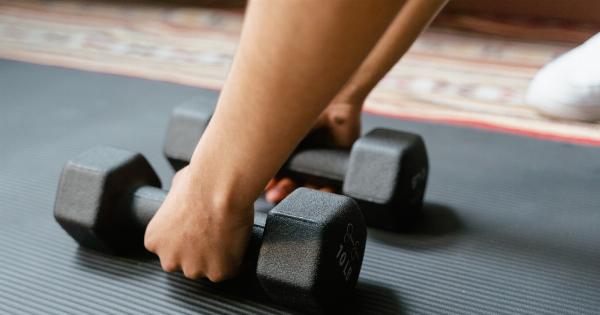Depression is a common mental health condition that affects millions of people around the world. It can be debilitating, making it difficult for individuals to enjoy daily activities and live their lives to the fullest.
While medication and therapy are often used to treat depression, exercise has also been shown to have a significant impact on mental health.
The Science Behind Exercise and Depression
Research has shown that regular exercise can improve mood and reduce symptoms of depression. When you exercise, your body releases endorphins, which are chemicals that promote feelings of happiness and well-being.
Exercise also increases blood flow to the brain and helps reduce inflammation, both of which can have a positive impact on mental health.
In a study published in the American Journal of Psychiatry, researchers found that exercise was as effective as medication in reducing symptoms of depression in adults.
The study also found that exercise had longer-lasting effects than medication. Another study published in Psychosomatic Medicine found that exercise improved mood in individuals with depression, regardless of their level of fitness.
The Benefits of Exercise for Depression
There are a number of benefits to using exercise as a way to manage depression:.
1. It’s accessible and affordable
Unlike medication and therapy, exercise is something that anyone can do. It doesn’t require a prescription or a mental health professional. It’s also affordable – you don’t need a gym membership or expensive equipment to get started.
2. It can be done anywhere and anytime
You can exercise anywhere – in your living room, outside, or at the gym. You can also do it anytime. Whether you prefer to exercise in the morning, afternoon, or evening, it can fit into your schedule.
3. It improves overall health
Exercise has a number of physical health benefits, such as reducing the risk of heart disease and diabetes. When you feel better physically, it can also have a positive impact on your mental health.
4. It can reduce stress and anxiety
Exercise is a natural stress reliever. When you exercise, you’re diverting your focus away from your problems and onto something positive. It also helps reduce cortisol, a hormone that is associated with stress.
The Best Types of Exercise for Depression
Not all types of exercise are created equal when it comes to managing depression. Some types of exercise are better than others:.
Aerobic exercise
Aerobic exercise, such as running or cycling, is great for reducing symptoms of depression. It increases blood flow to the brain and releases endorphins, both of which have a positive impact on mental health.
Strength training
Strength training, such as weightlifting or bodyweight exercises, can also be beneficial for managing depression. It helps build muscle, which can increase confidence and self-esteem.
Yoga
Yoga is a great way to reduce stress and anxiety. It combines physical movement with deep breathing and mindfulness, which can help calm the mind and reduce symptoms of depression.
Getting Started with Exercise
If you’re new to exercise, it’s important to start slowly and gradually increase your activity level. You can start with something as simple as a daily walk, and then gradually move on to more intense activities.
It’s also important to choose activities that you enjoy, so that you’re more likely to stick with it.
If you’re not sure where to start, consider working with a personal trainer or coach. They can help create a customized exercise plan that meets your needs and goals.
Final Thoughts
Exercise has numerous benefits for mental health, including reducing symptoms of depression. It’s affordable, accessible, and can be done anywhere and anytime.
By incorporating regular exercise into your routine, you can improve your mental and physical well-being.





























